
More and more large, vertical planters are being designed for big harvests of vegetables and small fruits. Creative gardeners are even coming up with clever ways to create their own mega edible container gardens. Here are some of the better products and ideas, ranging from inexpensive make-your-own containers to state-of-the-art vertical gardens that perform well at a range of costs.
All planting systems are best suited to smaller vegetable crops, like lettuce, spinach, small kale, bush peas, baby carrots, beets, determinate (bush) tomatoes, bush beans, compact peppers, and bush cucumbers and squash. Everbearing strawberries and low-bush blueberries are the best choices for fruiting crops. (Click here to learn about growing blueberries. Click here to learn about growing strawberries. And, click here for a list of the cutest, tastiest miniature vegetables for small-space gardens like these.) Just be sure that you consider planting time for warm- and cool-season crops as well as rotation. (Click here to read more about crop planting times and rotation.)
Vertical Gardens For Purchase
To be able to accommodate lots of plants, vertical gardens must be spacious and hold a lot of mix for ample root support and growth. That’s why the best vertical gardens have plenty of space.
Gronomics® Vertical Garden
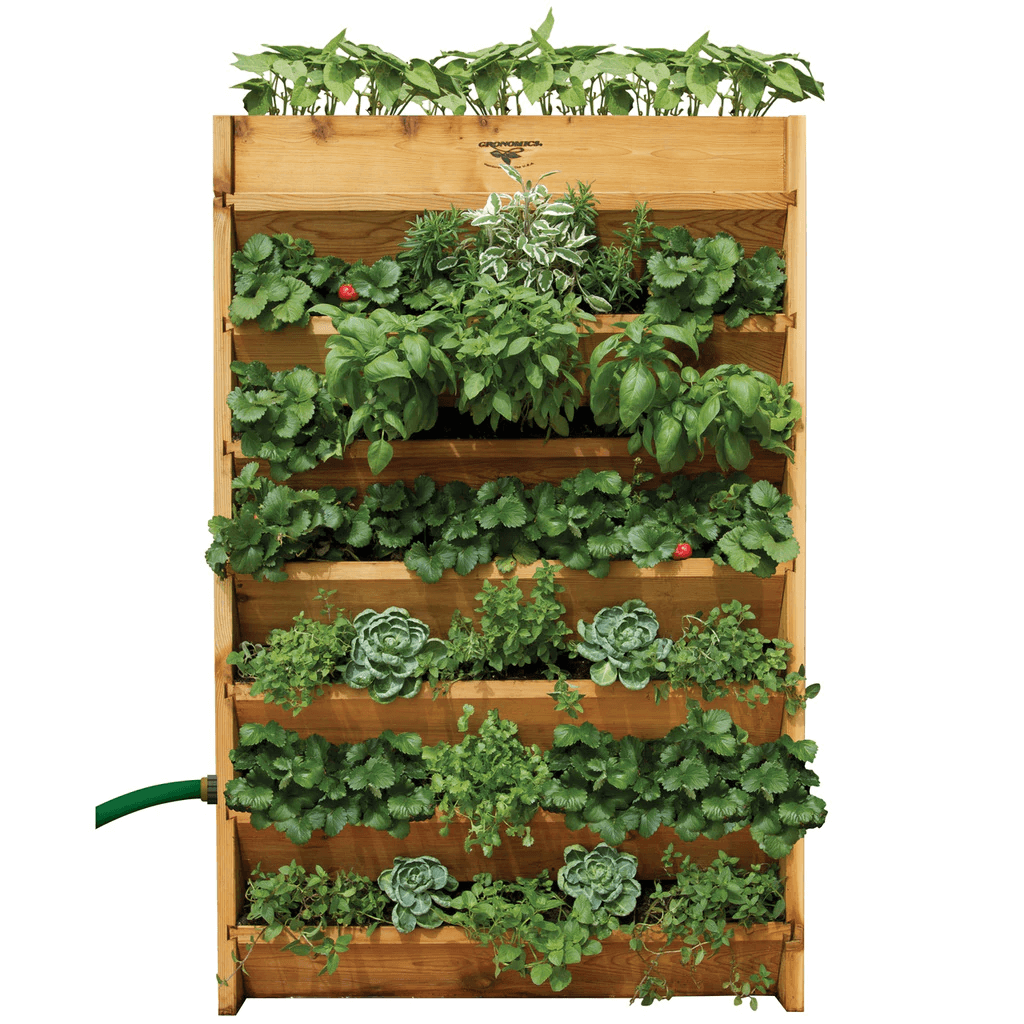
If you like attractive gardens made from natural materials, then this is the vertical planter for you. The Gronomics Vertical Garden (32x45x9) is made in the USA from 100% western cedar and has a footprint of just 2 square feet. Simply fill it with a quality potting mix, such as Fafard Natural & Organic Potting Mix, and begin planting. The garden contains its own drip irrigation system for easy watering. Apply a continuous-release fertilizer formulated for vegetables at planting time.
The Gronomics Vertical Garden is best suited for growing greens, herbs, strawberries, and small root vegetables. The top planter is perfect for growing bush beans (as shown in the image).
Garden Tower®
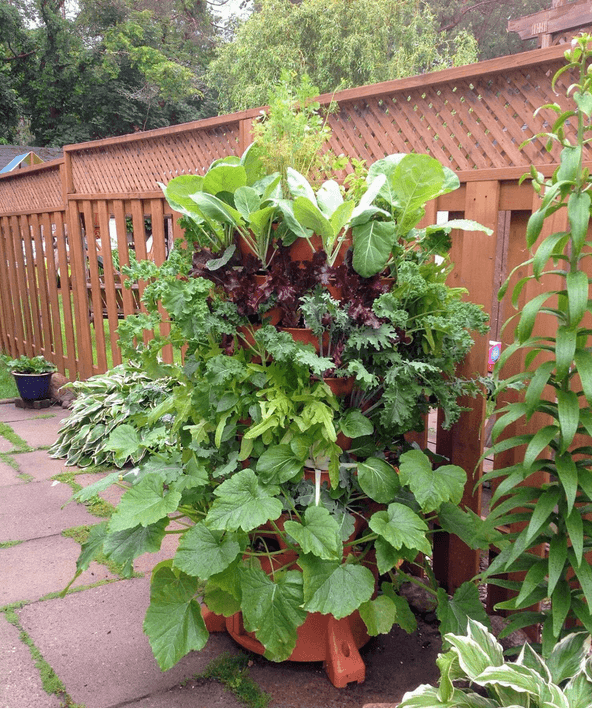
The Garden Tower® is a dual composter and soil-based vegetable garden tower that can accommodate up to 50 plants in just a 4-square-foot growing space. The system is watered from the top down and features a nutrient-tea drawer at the base, which catches fertile water for redistribution in the system. The Garden Tower has lots of room for root growth, which allows deep-rooting plants, like bush tomatoes, to grow well. Fill it with Fafard N&O. Gardeners growing greens should consider also mixing in some Fafard Garden Manure Blend, which is naturally high in nitrogen. It is made in the USA of high-purity HDPE plastic and has a 5-year manufacturer’s warranty.
Greenstalk® Stackable Vertical Planter
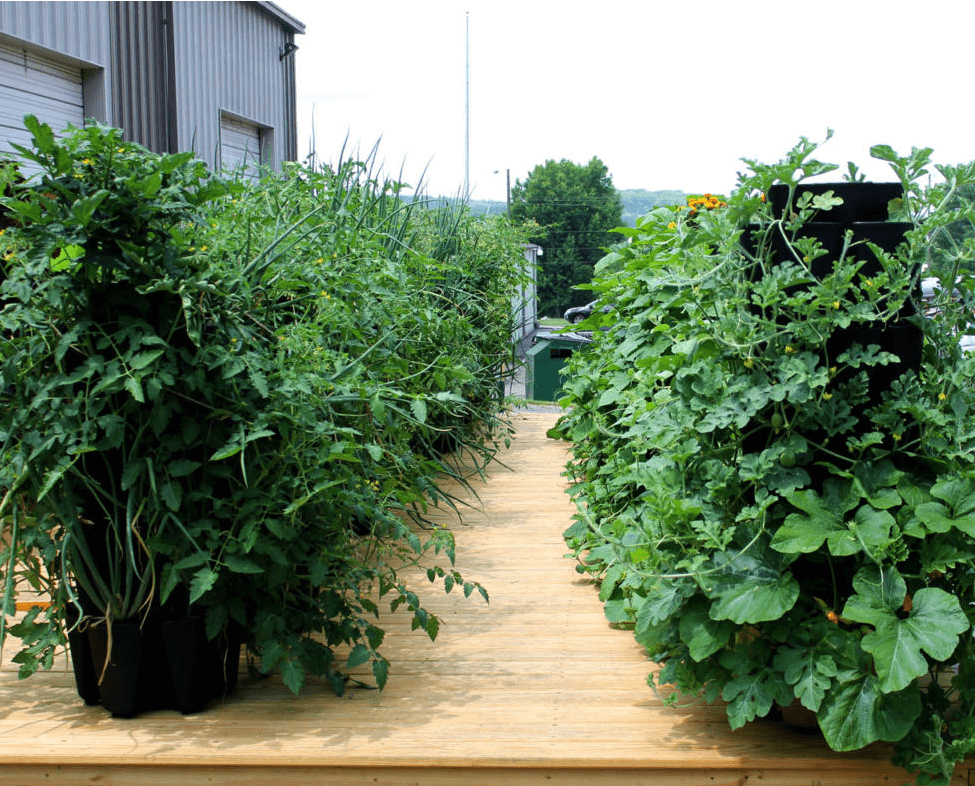
Just fill it with soil and plant! It is as easy as that. The modular Greenstalk® Stackable planter allows gardeners to raise it to various heights with its stackable segments. The planter is made in the USA and constructed from thick, UV-resistant polypropylene plastic (BPA, BPS & PVC-free), so it is long-lasting. One nice feature is the trickle-down watering well at the top that allows for easy irrigation and fertilization with a water-soluble fertilizer.
DIY Vertical Gardens
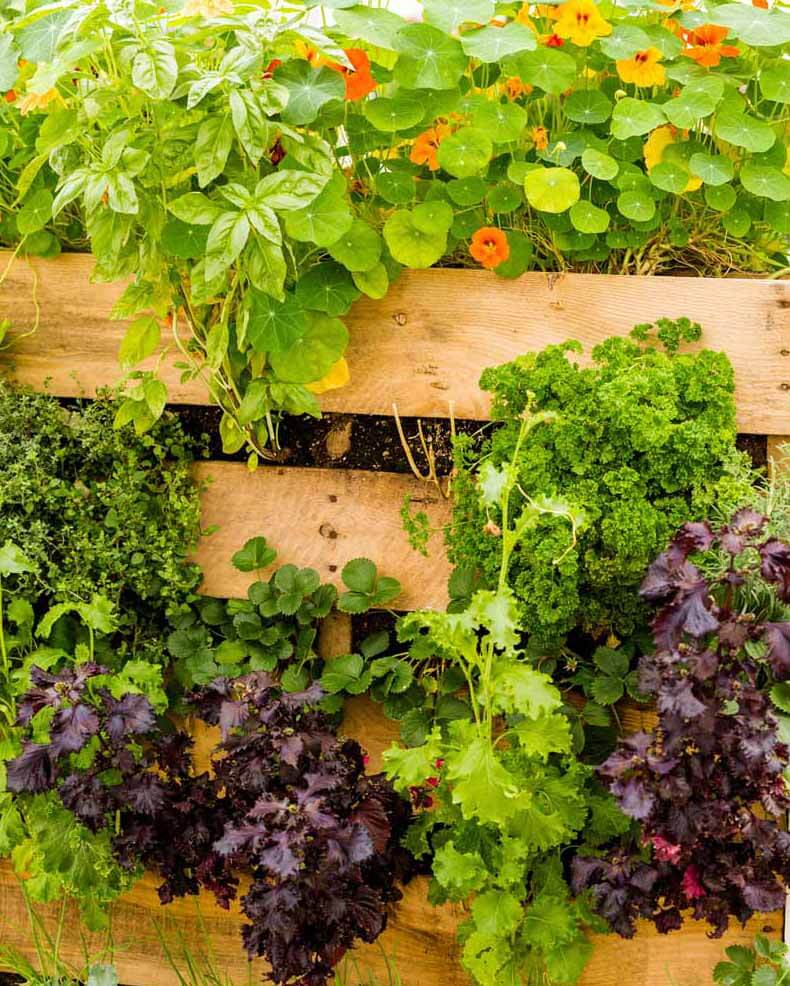
Creative gardeners have come up with economical DIY methods for vertical vegetable gardening. One popular method is creating pallet gardens, which are safe and inexpensive as long as they are constructed from untreated wood. Simply place the pallets upright, or affix them to a wall, fill them with growing media, and plant. Just find out whether the wood is pressure-treated before creating these gardens because treated wood contains heavy metals, which can leach into the soil and be taken up by vegetables. (Click here for a guide for identifying pressure-treated wood.)
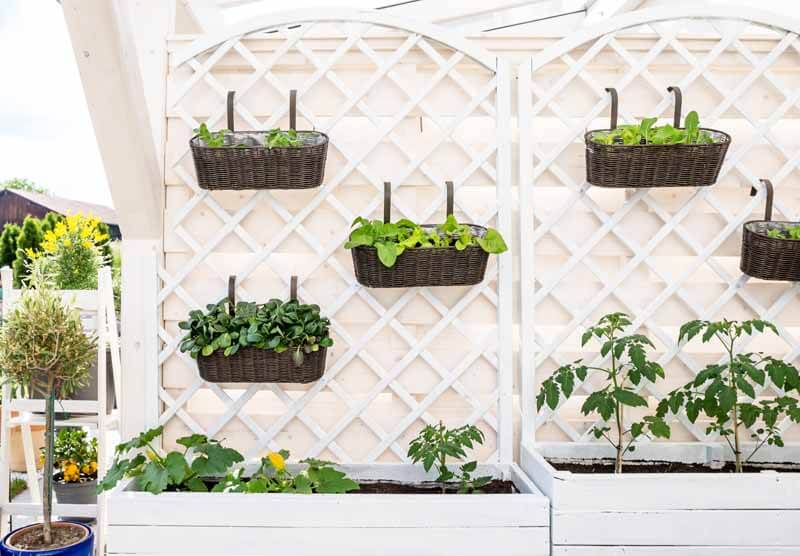
Other gardeners transform everything from traditional baskets to hanging baskets and plastic tubs into makeshift vertical gardens. As long as you can provide the with planter good support, it drains well, and it holds enough soil for strong root growth, your vertical garden scheme should work.
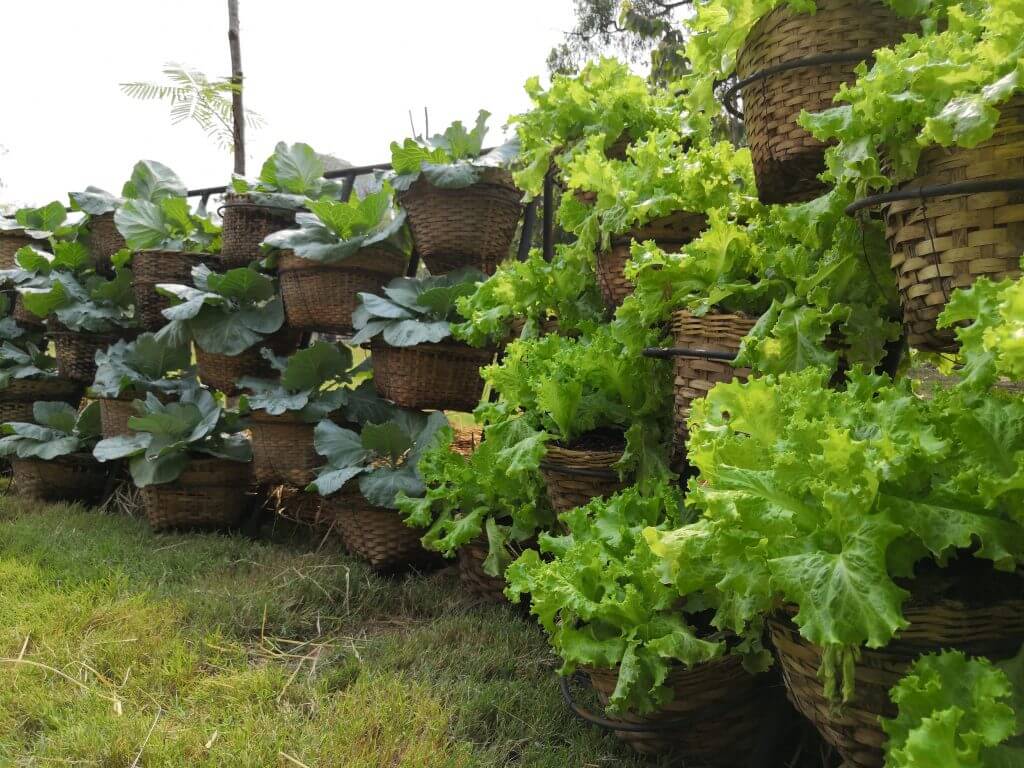
So many other materials can be used. Something as simple as a strong, tall tomato cage lined with mulch cloth (or burlap liner) and filled with quality potting mix and compost, such as Fafard Premium Natural & Organic Compost Blend, can create an outstanding structure for growing vegetables. To learn how to make one, watch this Black Gold video!

